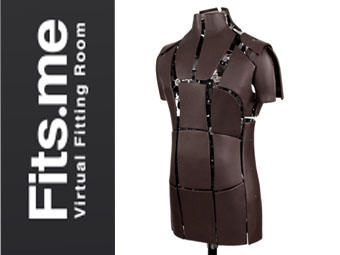
Section Branding
Header Content
One Size Kind of Fits All
Primary Content

Some time ago, the human race united in collective pursuit of a dream. That dream was to never have to leave their homes for anything again. Press forward some centuries and countless advances in technology later and what started as a cockeyed fantasy put forth by our ancestors is very close to being realized.
This particular step towards actualization is brought to us by the team at Fits.me; a European company that hopes to revolutionize the way that people shop for clothes online. What they have created is a virtual model that allows users of affiliated shopping sites to see how clothes would look on their exact body type before they purchase them online. They call it, The Virtual Fitting Room.
To use, customers simply click the extension that looks like this on their favorite shopping site.
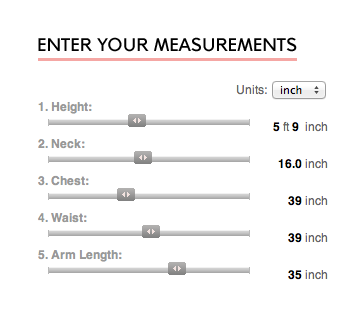
Then, they enter in their exact height, neck, chest/bust, waist, and arm measurements (and on some sites, their weight) in addition to their torso size (long, medium, or short, which is a variable that it seems many designers fail to consider) and the site’s algorithm drapes the clothing around a model customized to the user’s body type to give the buyer an idea of what the style selected may look like on them. It also alerts the user whether or not a particular selection may be too tight in the neck, too short in the sleeves, etc. and can suggest sizes for users who may be unsure as to what the most flattering size would be for their build (below).
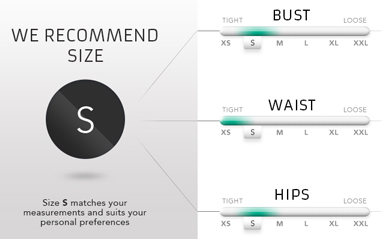
Like everything, this technology is not without its shortcomings. Thus far, The Virtual Dressing Room doesn’t extend far beyond dress shirts and fitted button ups/blouses with a handful of knits and overcoats being available on select sites. Also, while more generous than the traditional, cookie-cutter body type mockups, the algorithm’s models are far from being all encompassing with regards to body types. Larger bust, hip, and waist proportions or silhouettes that have a more than average ratios of any of these two seem to be problematic.
Currently, the site only caters to a select few designers that tend to be on the upper end of the cost spectrum and European. In the coming years, however, it is not unreasonable to believe that technologies like the Virtual Dressing Room will be commonplace among online retailers and our long sought after desire closer to being fulfilled.
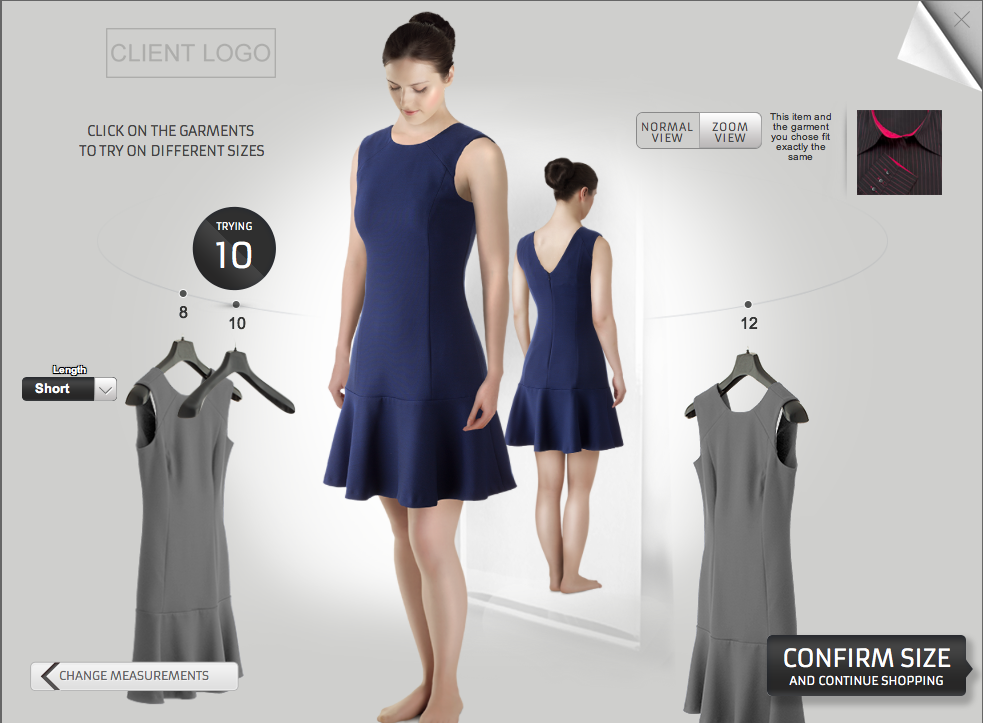
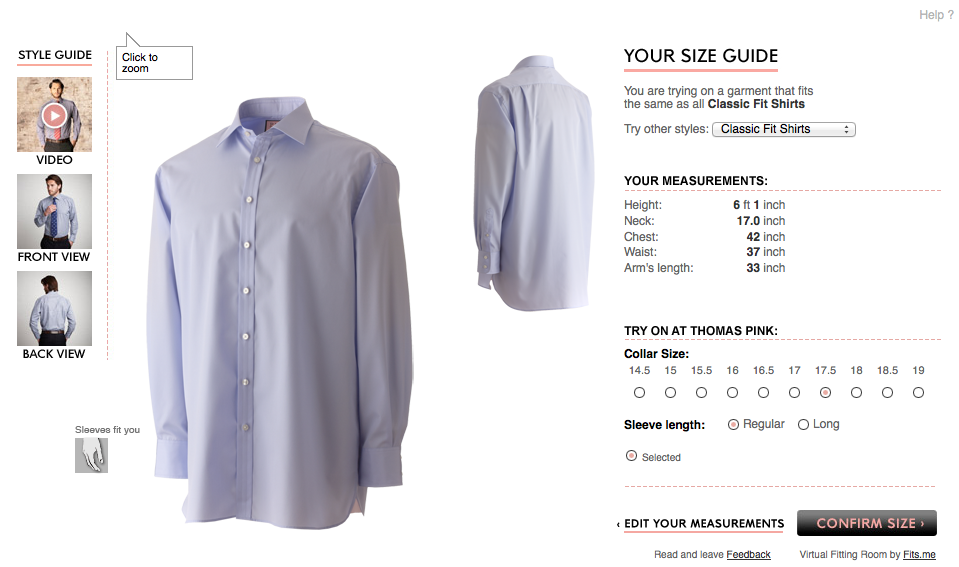
Secondary Content
Bottom Content





